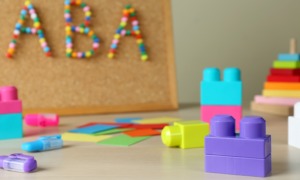This month’s Research Watch gives some of the details behind the headlines questioning the effectiveness of counseling after traumatic events. Two other studies provide useful information about how the biggest stresses of childhood can lead to tragedy, and why “quiet” kids need as much attention as troublemakers.
Does Counseling After Tragedy Really Help?
Single Session Debriefing after Psychological Trauma: A Meta-Analysis
Arnold van Emmerik, Jan Kamphuis, Alexander Hulsbosch and Paul Emmelkamp. The Lancet, Sept. 7, 2002, Vol. 360, pp. 766-771.
Free online after registration: www.thelancet.com/journal (free registration required. Search for “Hulsbosch”).
Mental Health and Mass Violence: Evidence-Based Early Psychological Intervention for Victims/Survivors of Mass Violence
National Institute of Mental Health, 2002.
NIH publication No. 02-5138. Single copies free from NIMH, Office of Communications, 6001 Executive Blvd., Room 8184, Bethesda, MD 20892-9663, or at www.nimh.nih.gov/research/massviolence.pdf
In the wake of school shootings, the Sept. 11 attacks and other traumatic events, the use of brief counseling to prevent later mental health problems has become an accepted standard practice. Stress debriefing, which typically consists of a single one- to three-hour session within a week of the traumatic event, has become especially popular.
Many newspapers across the country reported early last month that new research shows that these efforts were a waste of money. Isn’t counseling a good idea? A close look at the research shows that the results are complicated.
The main focus of recent news reports was an article in the prestigious British medical journal, The Lancet. Researchers from the University of Amsterdam concluded that single-session stress-debriefing did more harm than good.
This report was based on a meta-analysis of all the studies conducted on individual “critical incident stress debriefing” that took place within one month of traumatic events, and where appropriate measures were used to compare participants before and after the counseling.
The results were clear: Individuals who were debriefed were slightly more likely to have symptoms of post-traumatic stress disorder (PTSD) than those who had no treatment or other types of counseling.
To understand these results, you need to know how this study was done. Meta-analysis is a statistical analysis that combines several independent studies in one analysis. The studies must be similar in terms of what they study and how they study it.
Meta-analysis is often used to combine information from several small studies, and is only as good as the studies it is based on and the judgment of the researchers who decide which studies to include or exclude.
This meta-analysis included only seven of the 29 studies on this subject that had been conducted around the world. It did not include the 22 studies that were based on more than one session, took place more than one month after the traumatic event, did not evaluate the participants before the debriefing, or were considered inadequate for other reasons. None of the seven studies in the meta-analysis included children.
Around the same time that the Lancet article was published, a report by the National Institute of Mental Health concluded that psychotherapy was effective after traumatic events. However, the report also concluded that more short-term counseling and eye-movement desensitization and reprocessing were not effective.
The NIMH report was based on a workshop that brought together experts from across the country and was aimed at reaching a consensus. Conclusions were based on experiences and opinions as well as research.
The NIMH report concluded that there is some well-designed research that supports the effectiveness of “early, brief and focused psychotherapeutic intervention” for reducing distress in bereaved spouses, parents and children, whether the therapy was for individuals or groups.
It also concluded that there is some well-designed research evidence that certain kinds of cognitive-behavioral therapy (which is aimed at changing how people think about problems and how they behave) may help reduce PTSD symptoms, stress and depression in victims of accidents, rape and crime.
In contrast, it reported some evidence that early intervention in the form of reciting events and expressing emotions does not help prevent later problems and may even harm some individuals.
How could one report conclude that stress counseling is useless and the other that counseling is helpful? The NIMH report concluded that brief and focused therapy can be helpful, but its definition of “brief” did not include a one-time session.
In contrast, the Dutch meta-analysis specifically excluded studies that included more than one “debriefing” session. And the NIMH report concluded that there was good evidence that a “single one-on-one recital of events and expression of emotions” – typical of debriefing – does not reduce later symptoms of PTSD or other adjustment problems.
So the two reports were consistent in their conclusions that debriefing has not been shown to be effective.
The bottom line: The type of one-session debriefing that has become popular may not work and may be worse than nothing.
Many people are better able to help themselves by talking to friends and relatives or even by trying not to think about what happened.
However, there is evidence that children who still have symptoms months or years after a traumatic event can benefit from counseling (see “Helping Kids Cope with Disaster,” Youth Today, April 2002) and that kids who are exposed to chronic stresses need help. Below is a study on that topic.
How Childhood and Youth Experiences Link to Suicide
Childhood Abuse, Household Dysfunction, and the Risk of Attempted Suicide Throughout the Life Span
Shanta R. Dube, M.P.H., Robert F. Anda, M.D., Vincent J. Felitti, M.D. and colleagues.
Journal of the American Medical Association, Dec. 26, 2001, Vol. 286, No. 24, pp. 3089-3095. Available free from Dube, CDC, Division of Adult and Community Health, 4770 Buford Highway NE, MS K-45, Atlanta, GA 30341, skd7@cdc.gov. Copies free from Kaufman, Robert Wood Johnson Foundation, Route 1 and College Road, East Princeton, NJ 08543.
More than 30,000 Americans commit suicide every year, and rates are especially high among the young and the old. New research shows that a child who has many very negative experiences can be 30 to 50 times as likely to attempt suicide as a youth or as an adult.
The study is based on more than 17,000 adults who were patients at a primary care clinic in San Diego between 1995 and 1997 and completed detailed questionnaires about negative experiences during their first 18 years of life, including abuse, neglect, domestic violence and family substance abuse.
The average age of the patients was 56; 54 percent were women and 75 percent were white. Most had at least some college education, while one in four had only a high school diploma or less.
Almost two out of three (64 percent) reported experience in at least one of the eight “adverse” childhood categories: emotional abuse, physical abuse, sexual abuse, battered mother, household alcohol or drug abuse, mental illness in household, parental separation or divorce, or having an incarcerated household member.
More than 5 percent of the women and 2 percent of the men reported having attempted suicide. The type of childhood experience significantly affected the likelihood of a suicide attempt.
Attempts increased by 100 percent for those whose parents had divorced or separated, or where there was substance abuse in the home; increased by approximately 150 percent for those with an incarcerated family member or battered mother; tripled for those who had a mentally ill relative in the house, or who experienced physical or sexual abuse; and were five times as high for those reporting emotional abuse.
One type of major childhood stress tends to cause other types of major stress, and the impact of these experiences on suicide attempts increased dramatically when there were several stresses. For example, reporting at least seven of these stresses increased the chances of a youth suicide attempt 51-fold and an adult suicide attempt 30-fold.
The researchers admit that a shortcoming of this study is that it relied on adults reporting what happened to them many years ago as children. Other studies have found that adults tend to underreport childhood abuse, but it is also possible that adults who have attempted suicide are more likely to recall bad experiences as children.
When Silence Means Violence
Pathways to Aggression Through Inhibited Temperament and Parental Violence
Malcolm Watson and Kurt Fischer.
Presented at conference of the Society for Research in Child Development. Free summary at http://www.gse.harvard.edu/%20news/features/fischersummary.html, or contact jennifer_walch@gse.harvard.edu for free white paper.
Some kids seem like obvious troublemakers, but many youth workers have found out the hard way to also pay attention to quiet kids. A new study by researchers at the Harvard School of Education and Brandeis University indicates that inhibited kids can become very violent.
The study followed 440 children, starting at ages 7 to 13, for seven years. All were from Springfield, Mass., a small city that is similar to many other parts of the country in terms of social class and ethnic diversity.
This study supported previous research that has shown harsh physical punishment in the home will predict children’s aggressive behavior. What was new was the finding that the children who were more inhibited were more likely to be violent.
Inhibited children were defined as socially withdrawn, uncomfortable or unhappy in new situations and anxious about making new friends or trying new activities. They were not just quiet or shy.
Twenty-five of the children were classified as aggressive, based on the Child Behavior Checklist, which was part of a series of four, two-hour interviews with each of the children and their mothers. These aggressive kids physically and verbally lashed out at other kids – insulting them, hitting and pushing them or attacking them with weapons. Children who were victimized by peers were more likely to have violent fantasies, which in turn predicted aggressive behavior. Kids with low self-esteem also tended to be more violent, but that predictor was not as strong as these other factors.
Race, ethnicity, social class, gender and other family characteristics did not have much impact on child aggressiveness. Inhibition was the only personality characteristic that predicted aggression.
The researchers were startled by the results, and they advise adults not to assume kids are fine just because they are quiet.
They recommend that while teachers and other youth workers are oiling the “squeaky wheels,” they should also help withdrawn children make friends through clubs, study groups and other activities.
“Pay close attention to withdrawn youth and try to connect with them, both to help the youth to make connections with other people and to check out what is happening,” author Kurt Fischer said in an interview. “There can be lots of turmoil behind the withdrawal, and it can lead to violence.”






























